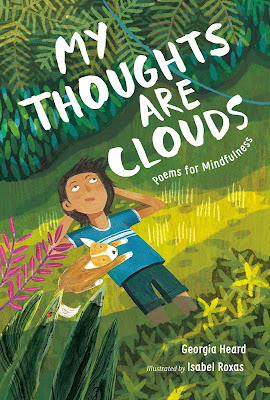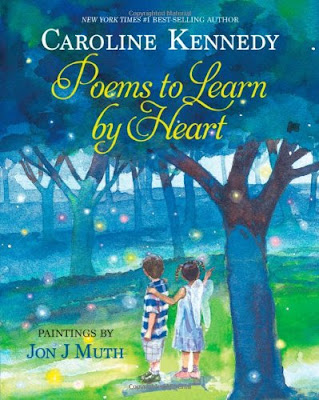The Arrival
Bibliography:
Tan, Shaun. The Arrival. New York: Scholastic, 2007. ISBN: 0439895294Plot Summary:
A man gently wraps a family photo in cloth and twine, placing it in his suitcase. So begins his journey to a new land. His wife and daughter walk him to the train beneath dragon-like monsters which loom above the city in huge, threatening shadows. After a voyage across the windswept ocean on a ship full of travelers, the man disembarks in a new world, standing in line to be processed in a surreal reimagining of Ellis Island. The language is an incomprehensible system of strange symbols, and he attempts to communicate with hand gestures. His papers are stamped and he takes an elevator-like sky-taxi suspended by a balloon across the city, which is sprawling with conical buildings and massive statues of winged figures cradling giant eggs. He finds himself in a street market filled with musicians, vendors, barbers, and curious creatures that appear to accompany most of the individuals in this land. Unable to read the signs or maps, the man draws in his sketchbook to communicate with a stranger on the street who helps him find lodging. His apartment is filled with unfamiliar appliances including a lidded container from which leaps an alien creature which soon becomes his pet. The next day, he embarks upon the city in search of food, relying on the kindness of strangers to help him with public transportation. The woman on the sky-ship is an immigrant, too. A flashback depicts her captivity, punishment for reading books, and her escape to a new land. A grocer and his son demonstrate how to eat the perplexing food of this land and even invite the man to their home for dinner. The man recoils at the jagged tail of their pet creature which reminds him of the dragon-like monsters that terrorize his homeland. He draws pictures to explain. The grocer understands. A flashback reveals the danger from which the grocer and his family escaped, a city invaded by giants in hazmat suits, wielding vacuums that rip the fleeing people from the streets. The next day, the man seeks employment and struggles to communicate until he finds work in a factory. His new friend at his job has also fled violence, and a flashback reveals images of war and desolation. With each encounter, the man understands more about his new home, its customs, and its inhabitants. The story ends with his wife and daughter coming to join him. Reunited, his daughter ventures out into the streets and helps a new arrival with directions, interpreting the map and pointing the way.Critical Analysis:
In this wordless graphic novel, Shaun Tan ingeniously captures the disorienting and overwhelming strangeness of an immigrant person’s first encounter with an unfamiliar culture. The concept lends itself perfectly to a wordless art form, as all communication occurs through hand gestures, facial expressions, and sketches. The only text in the book appears as a surreal foreign language adding confusion rather than clarification. Tan’s sepia-toned illustrations render breathtaking cityscapes as well as intimate facial expressions. The depth and nuance of his drawings contain a narrative power that is incredibly compelling.Readers will empathize with the man and his family as they say their goodbyes, separated for a time in order to create a better life for themselves. The flashbacks reveal the various refugee stories of the characters the man meets along the way, and despite their surreal nature, will evoke powerful emotions from readers, especially those who may have fled to a new country to escape hardship. Although the settings are bizarre, the humanity in the stories is unmistakable.
That the plot centers around ordinary tasks such as finding food, lodging, and work speaks to both the universality of the story and the significant difficulty that new immigrants experience in navigating an unfamiliar land. This is an ideal selection for English learners who are new to the country and the language; they will grasp the story's meaning immediately. Moments of humor that arise from cultural misunderstandings will delight and entertain readers. Noticeably absent from this story is any hint of hatred or xenophobia. Rather, strangers offer help and hospitality freely, though it should be noted that these hospitable strangers are immigrants themselves. When the daughter offers help to a newly arriving traveler at the end of the story, the message is clear, and the circle of generosity continues. Readers of all ages will stand in awe at the profound work of art that Shaun Tan has created in The Arrival. Pack your bags, and prepare for an unforgettable journey.
Awards and Review Excerpts:
Hugo Award nomineeBoston Globe - Horn Book Award
"A silent, fantastical masterpiece... Filled with both subtlety and grandeur, the book is a unique work that not only fulfills but also expands the potential of its form." Booklist
An unashamed paean to the immigrant's spirit, tenacity and guts, perfectly crafted for maximum effect." Kirkus Reviews
"Few will remain unaffected by this timeless stunner." Publishers Weekly
Connections:
Writing Prompts for Students:- Invite students to write scenes based on excerpts from The Arrival. Students may hone their descriptive skills and develop ideas for dialogue inspired by Tan’s illustrations. Compare writing products to demonstrate how different authors bring their own style and perspective to their adaptations.
- Ask students to invent new characters and tell their immigration backstories modeled after the ones in the book. What strange and terrifying situations can they imagine? How will they escape?
Cicada. New York: Arthur A. Levine Books, 2019. ISBN: 1338298399
Lost & Found. New York: Arthur A. Levine Books, 2011. ISBN: 0545229243
Tales from Outer Suburbia. New York: Arthur A. Levine Books, 2009. ISBN: 0545055873
Share this short film created by Frederik Vorndran with the illustrations from The Arrival:
Shaun Tan - The Arrival Animation on Vimeo




Comments
Post a Comment